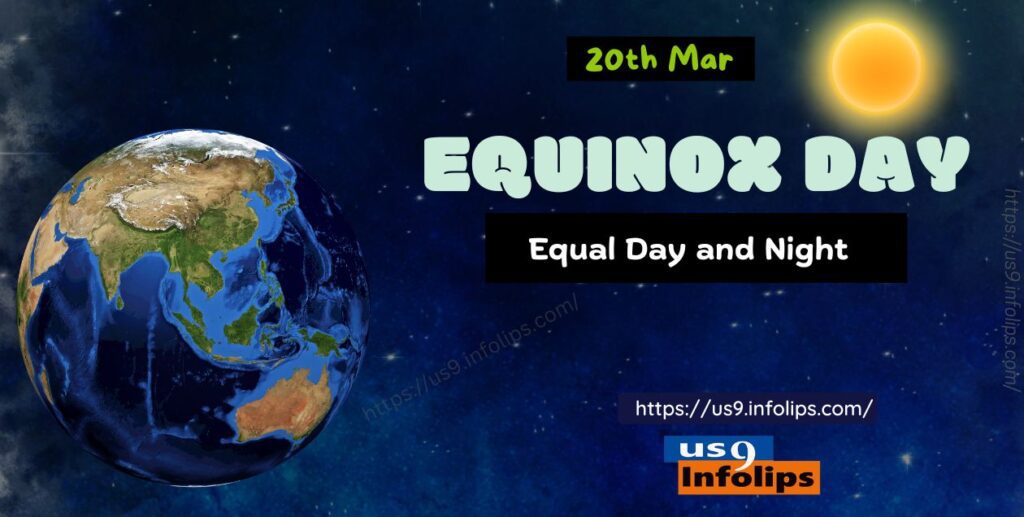Equinox Explained: The Science, Significance, and Global Celebrations of Equal Day and Night – Best Info
Equinox Explained: The Science, Significance, and Global Celebrations of Equal Day and Night
The Equinox: A Celestial Phenomenon of Balance
The equinox, derived from Latin aequus (equal) and nox (night), marks one of two days in the year when day and night are nearly equal in length across the globe. Occurring in March and September, these events are deeply rooted in astronomy, culture, and tradition. Let’s explain Equinox Explained.
Key Features of the Equinox
- Equal Day and Night:
- The Sun aligns directly above the Earth’s equator, distributing sunlight evenly between the Northern and Southern Hemispheres.
- Day and night last approximately 12 hours each, though exact equality varies by location.
- Two Annual Occurrences:
- March Equinox (Vernal): Marks spring in the Northern Hemisphere and autumn in the Southern Hemisphere (around March 20–21).
- September Equinox (Autumnal): Signals autumn in the North and spring in the South (around September 22–23).
- Astronomical Significance:
- The Earth’s 23.5° axial tilt relative to its orbit causes seasonal changes. During equinoxes, the tilt aligns perpendicular to the Sun’s rays.
- Marks the midpoint between solstices (longest and shortest days of the year).
- Global Cultural Celebrations:
- Nowruz: Persian New Year, celebrated on the March equinox.
- Mabon: A pagan harvest festival during the September equinox.
- Higan: A Japanese Buddhist holiday honoring ancestors.
- Symbolism of Balance:
- Many cultures view equinoxes as moments of harmony, renewal, and reflection.
Why Are Equinoxes Important?
- Agricultural Cycles: Historically guided planting and harvesting.
- Astronomical Calendar: Used by ancient civilizations (e.g., Mayans, Egyptians) to design monuments like Stonehenge and Chichen Itza.
- Climate Transitions: Signals shifts in weather patterns and animal migrations.
- Spiritual Practices: Linked to themes of rebirth, gratitude, and equilibrium.
Unique Aspects That Make Equinoxes Special
- Global Synchronization: Occurs simultaneously worldwide, uniting people across cultures.
- Celestial Alignment: The Sun rises due east and sets due west, a rare directional precision.
- Auroras and Space Weather: Equinoxes enhance geomagnetic activity, increasing chances of auroras.
FAQs About Equinoxes
- Q: What causes an equinox?
A: The Earth’s axial tilt aligns perpendicular to the Sun’s rays, creating equal daylight distribution. - Q: Are day and night exactly 12 hours during an equinox?
A: Nearly, but atmospheric refraction and sunrise/sunset definitions create slight variations. - Q: How do equinoxes differ from solstices?
A: Solstices mark the longest/shortest days, while equinoxes have equal day/night. - Q: Can you balance an egg on an equinox?
A: A myth! Eggs can balance any day with patience, not just equinoxes. - Q: Why do equinox dates vary?
A: The Gregorian calendar’s 365-day year doesn’t perfectly match Earth’s orbit (365.24 days). - Q: Do all countries experience equinoxes similarly?
A: Near the equator, day/night differences are minimal year-round. Polar regions see extreme changes. - Q: How is the equinox celebrated today?
A: Through festivals (e.g., Holi, Mid-Autumn Festival), meditation, and scientific outreach. - Q: Does the equinox affect tides?
A: Yes! Equinoxes can amplify “spring tides” due to the Sun and Moon’s gravitational alignment. - Q: Is the equinox the same moment worldwide?
A: Yes, but local times differ due to time zones.
Conclusion
Equinoxes are more than astronomical events; they are bridges between science and culture, reminding us of Earth’s delicate balance and humanity’s shared connection to the cosmos. Whether through ancient rituals or modern scientific observation, these days inspire awe and reflection, urging us to cherish the rhythms of nature
Follow us for more captivating articles and stay connected to explore the world. Let’s embrace the power of communication and understanding.

Related topics:
1. Perfect World Travel Guide
2. 9 Most Popular EV Cars in the USA
3. 9 Best Things About Apple TV 4K – Third Generation
4. Think before You Renew Amazon Prime
5. Jimmy Carter: A Great Legacy
6. Memorial Day: Honoring the Sacrifice, Celebrating Freedom
School Site :
For English grammar and lot more : Smart School Infolips
Marathi Poems: Marathi Rang












